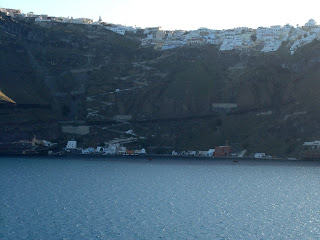When we arrived in Budapest, around lunch time, we didn't immediately liked what we saw. It looked a bit sleazy, and we saw clearly that Hungary was poorer than the other two countries we had visited. The people at the information desk (which didn't look an official place at all) didn't quite know how to get to the place where our hotel was located so gave us really confusing directions. We bought the Budapest card, which cost us 7500 florint (more or less 28€) but gave us access to all public transportation for 72h, as well as dicsounts on some places. As te information guys gave us bad directions, we took almost 3 hours to get to our hotel and walked for a while under a burning, merciless sun. We weren't at all in a good mood when we got there. But then we lightened up as the recepcionist told us that for our prolonged stay (4 nights) they would give us their appartment with jacuzzi. Well, it wasn't an appartment, just a room a bit bigger than the normal rooms, with mini-bar and a bigger bathroom with jacuzzi. That was nice. Also, this hotel cost us only 19€ per night (double bedroom), breakfast included!
So, once more, don't exchange more than you need at the station. Just change the sufficient amount for the public transportation ticket. Then exchange the rest in the change booths in the city.
I must say I liked Budapest a lot. For starters, I felt almost at home. I don't know how to explain this, but I felt more at home there than in Vienna or Prague. Secondly, the people are very friendly. Even if many of them don't speak english, all of them try to help you and are nice to you.
We were lucky enough to catch a bit of a show integrated in a music festival. It was right in the centre of Budapest. Lots of tables were put one next to the other and young and new sit there drinking beer and eating sausages while a band whose name I can't remember played a kind of progressive music. When they started playing reggae we left (nothing against reggae!).
In Budapest we visited the National Gallery, the Castle (we just walked around the exterior part of it), the Tabán gardens, Gellért Hill, Citadel, the Opera House (this time we just went inside and looked around the hall but didn't take the guided tour), the City Park, Férenc tér, the Parliament (we didn't go inside), Váci Street, Frank Zappa Café, Saint István Basilica (we didn't go in), Széchenyi bridge.
The National Gallery is very interesting. It doesn't really have many famous names, but it has some paintings that show different approaches to art than those we are used to seeing in more famous galeries.
The Gellért Hill and Tabán gardens ar every nice, but the Citadel isn't worth visiting... Just two or three restaurants and pubs, lots of souvenir tents and the walls of the once exciting Citadel.
A tip in the food department: there's a really cheap place to eat in on the Buda side, on the Bartók Bela ut. where you can eat well and plenty. We had lunch there twice!
And since I've no trace of inspiration right now, and I have postponed this post for way too long, I'm ending here. If you would like to know more, just mail me!

















 The ancient Stadium:
The ancient Stadium: Ancient guardian on the top of a church:
Ancient guardian on the top of a church:

 Mykonos is a cute little place with small white houses which the natives paint twice a year. It's basically a fishing village, it reminded me somewhat of the villages in Algarve. The narrow streets are really nice, if you remember to get out of the way of the cars! Besides the cube-like whitewashed houses, Mykonos is also known for it's well preserved windmills and I think for the pelicans that seem to wander through the streets amongst the people, although I haven't seen any.
Mykonos is a cute little place with small white houses which the natives paint twice a year. It's basically a fishing village, it reminded me somewhat of the villages in Algarve. The narrow streets are really nice, if you remember to get out of the way of the cars! Besides the cube-like whitewashed houses, Mykonos is also known for it's well preserved windmills and I think for the pelicans that seem to wander through the streets amongst the people, although I haven't seen any.
